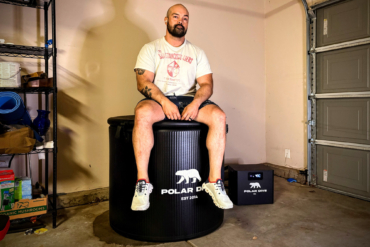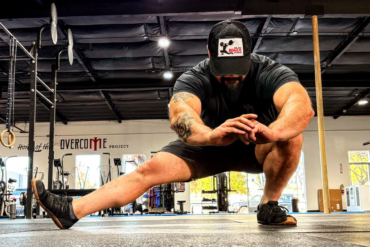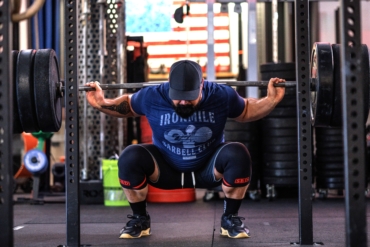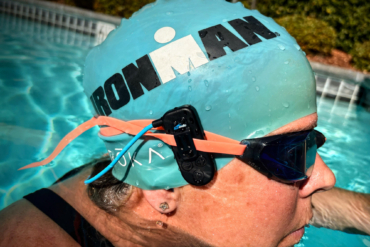Working out with a virtual trainer is a common practice for busy fitness buffs. But how do you get a good online fitness coach?
You can find an online personal trainer in at least two ways. The first is through your phone. You can now download an app and choose from a list of instructors. A second option is to link up with a proven or recommended local or national personal trainer who delivers programming and training plans online. We’ll discuss how to get the most from both.
Trainiac is just one example of an emerging one-on-one online training platform. For example, the Trainiac app lets you browse from a clearinghouse of virtual certified personal trainers who don’t need to be near you to coach you. You choose one that fits your style, time demands, or fitness goals in a specific sport. Then you get a personalized plan and “anytime” messaging.
But finding the right fitness professional is a little more complicated than seeing a smiley online profile and pressing “go,” according to Seiji Ishii, a personal trainer who has coached endurance athletes through Carmichael Training Systems and Ultrafit. He also coaches professional athletes with a hybrid approach using online training plans, in-person sessions, and managed communication.
Ishii has over 20 years of experience, so we asked what he recommends people look for in an online trainer. Here are his tips for getting a good one.
Start With Credentials

Often, people get caught up in choosing a trainer based on testimonials. Ishii said that’s a mistake. Instead, look at actual credentials and certifications — and legit ones at that.
“The ACE exam is a joke,” Ishii said. “Your dog could pass it.” So if your trainer can’t pass it, that’s a red flag. Instead, look for a trainer with a certification from the American College of Sports Medicine or the National Academy of Sports Medicine.
Look for Life Experience
That said, don’t let credentials overrule experience. Online trainers can look deceivingly good on the internet. But if they don’t have “field experience,” it’s going to show up fast.
“There’s a certain type of knowledge you have once you ‘live it,’” Ishii said of veteran trainers who have learned how to work with lots of different personalities, for example, or have experienced ups and downs like injuries and comebacks.
“You don’t just want the athlete who became a star for a trainer; you want the athlete who did the work, made mistakes, got sick or hurt, and who wants to keep you from making the same mistakes,” he said. That firsthand knowledge is critical. And it might mean considering someone who is older and further along in their career.
Pay for Contact
Online training plans are a dime a dozen, according to Ishii. “You want to spend the money on the contact time, not the written word.” Follow the 90-10 rule: 10 percent for the “written” stuff and 90 percent for human aspect.
That could mean paying extra or a “premium” level online to be able to call and talk to your online personal training pro about stress and other things affecting your fitness goals. Parameters could be texting a reasonable amount of times per day or week, or even sharing videos, such as proper form when lifting weights.
“Let’s say your cortisol went way up because the GearJunkie server crashed. You want someone who is willing to adjust a plan to those kinds of human stressors,” he said. “It’s not just adding 1 percent in volume or intensity on a spreadsheet; anyone can do that. You want someone who can listen and adapt training based on what your stressors are in that moment.”
That said, one trainer, even online, can effectively train only a limited number of clients. Ishii’s personal cutoff is 10. “One hundred people is not coaching, no matter how late you can stay awake,” he said.
Know Your Motivation Level
No online training person or platform will work if you’re not realistic about your level of motivation around getting or staying fit. Are you hiring an online personal trainer solely for daily accountability? How serious are you about getting fit for a specific race, goal, or sport? What do you expect a trainer to provide that you can’t give yourself? Be honest.
Understand what you’re really signing up for can make all the difference between success and failure. Some people need to go all in with a trainer who they can access around the clock advice and cheerleading. Other people are more self-motivated and want a specific training plan to achieve a goal, with a coach who can give them more general guidance.

An expensive or premium trainer “could be worth it if you have zero knowledge, you don’t want to research it yourself, and you need someone there counting to 20 with you,” Ishii said.
For others, it may be enough to sign up with an online trainer as a jumpstart or to achieve for an end result, like hitting a certain time in a half marathon. With this higher level of motivation, Ishii recommended “getting as much information as they [your trainer] are credible for, but don’t stick around because, like in the case of a chiropractor, you think you need to get cracked every week.”
Start Online Training Yourself
A good professional trainer, whether they’re online or in your town, trains clients on how to eventually do most of the work on their own. And that means sacrificing some job security.
But that’s part of being a good trainer and coach, said Ishii. In fact, you should be worried if your trainer seems like they’re withholding information. You should never feel enslaved to your trainer.
If you are the more self-motivated type, you can take that autonomy a step further. First, find a basic training plan online. Ishii suggests TrainingPeaks for endurance sports.
Next, consult with a trainer with those papers in hand. Finally, ask your trainer the harder “why” questions that they get paid the big bucks for: Why do I feel this way when I get stressed? Why are my workouts so inconsistent? Why do I feel like I’m hitting a plateau?
Ultimately, no one except you can decide what kind and level of online training you need to succeed. But follow these basic guidelines to hiring an online fitness coach — and at least feel better about what you’re paying for.











